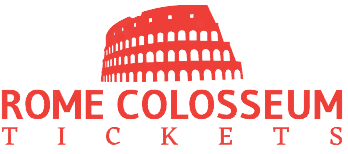About Colosseum
The Colosseum, an architectural marvel nestled in the heart of Rome, stands as an enduring testament to the grandeur and ingenuity of the ancient Roman Empire. The iconic structure, also known as the Flavian Amphitheatre, has captivated visitors for centuries, drawing them into a world of gladiatorial combat, grand spectacles, and rich historical significance. Today, Colosseum tours provide an immersive experience that allows visitors to step back in time and witness the remnants of a bygone era. This article explores the allure of Colosseum tours, delving into their historical significance, the highlights of a typical tour, and the impact of this remarkable landmark on both visitors and the city of Rome itself.
Historical Significance:
The Colosseum, constructed in 70-80 AD, serves as an emblem of Roman engineering brilliance and artistic finesse. Built during the reign of the Flavian dynasty, it was primarily used for gladiatorial contests, animal hunts, and other public spectacles that enthralled thousands of spectators. Beyond its entertainment value, the Colosseum also represents the social, political, and cultural ethos of ancient Rome. It was a symbol of imperial power, a testament to Roman architectural prowess, and a reflection of the city’s social hierarchy.
Colosseum Tours:
A Journey Through Time Embarking on a Colosseum tour takes visitors on a captivating journey through history. Typically, the tour begins at the main entrance, where professional guides shed light on the Colosseum’s architecture, construction techniques, and its role as a cultural center. Exploring the underground chambers, where gladiators and wild animals awaited their turn in the arena, evokes a sense of anticipation and intrigue.
As visitors ascend to the upper levels, they are rewarded with panoramic views of the ancient city and a closer look at the colossal scale of the structure. Guides vividly narrate tales of gladiators, their training, and the fierce battles that took place within these hallowed walls.
The tour also provides an opportunity to discover the ingenious mechanisms that made the Colosseum’s spectacles possible. Visitors can witness the intricate network of elevators, trapdoors, and hidden passageways that facilitated the arrival of performers and wild animals into the arena. These engineering marvels continue to astound visitors, showcasing the remarkable technological advancements of the ancient world.
Impact on Visitors and the City of Rome:
Colosseum tours have a profound impact on visitors, inspiring awe and reverence for the ancient world. Standing amidst the ruins, visitors are transported back in time, able to visualize the vibrant and dynamic atmosphere that once characterized this remarkable venue. The Colosseum’s sheer scale and architectural magnificence leave a lasting impression, igniting a sense of wonder and appreciation for human achievement.
Moreover, Colosseum tours have significant cultural and economic implications for the city of Rome. As one of the most visited tourist destinations in the world, the Colosseum attracts millions of visitors each year, bolstering the local economy and supporting various businesses in the surrounding area. The revenue generated from ticket sales and associated services helps preserve and maintain this ancient monument, ensuring its longevity for future generations.
Conclusion:
Colosseum tours offer an extraordinary opportunity to delve into the rich history of ancient Rome and experience the grandeur of one of the world’s most iconic landmarks. Beyond the magnificent architecture, these tours bring the stories of gladiators, emperors, and ancient spectators to
